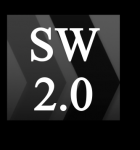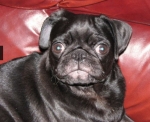Good morning all,
I was recently diagnosed with moderate sleep apnea based on the number of events, but severe sleep apnea based on my O2 level dropping below 80 (it dropped to 77). I am scheduled for a titration study a week from today. Would greatly appreciate any thoughts and interpretations on the following results - I have been reviewing other findings on here, but some of the results are reported differently. It's great to have found such a supportive community, I don't look forward to wearing a mask, unfortunately. I don't like snorkeling because of the feeling I get, so this has me a bit concerned about wearing a cpap machine. I mentioned this to my sleep study dr. and he said he does not recommend a dental appliance given my O2 level being in the severe range.
My background - 51 yr old male, 5-8", 250 lb, large boned/frame. Neck size is 21 (which I understand is a sign). Morning headaches. Fatigue - seem to be more tired than I should feel. Last year, I asked my Dr. about my vitamin D level which had never been checked, and it came back at 26, far too low, so I have been on 10,000 units per day and it's up to 46 now and good. I also found out I have Low T - my t level was down to 161 (on a scale of 330-1100), so I am on T supplementation and my levels are great now. However, I have also heard that supplementing with testosterone can make sleep apnea worse. I was also recently diagnosed with ocular hypertension, or "pre-glaucoma", so now I'm on eye drops to prevent that. All of this has come about as me trying to improve my health to live longer, thus the "2.0" in my username profile. And everything else I'm doing as part of "anti-aging" initiatives are worthless if I don't fix my sleep apnea problem. My mother has it, and the dental appliance seems to be working for her. Her brother died from it in his sleep.
I have a desk job, but for exercise, I push mow our 1/2 acre lawn every week as well as another yard for a house we are selling.
Thanks for any help you can provide interpreting my data below!
===========================================
Please find enclosed the final report of a complete nocturnal diagnostic polysomnogram performed on 8/3/2015.
SLEEP ARCHITECTURE:
The total time in bed was 388.0 minutes; the total sleep time was 324.0 minutes. Wake after sleep onset was
55.0 minutes. Sleep efficiency was 83.5%. The Sleep Latency was 9.0 minutes. The RBM Latency was 105.5 minutes. While asleep, the patient spent 0.5% of the time in Nl sleep, 69.4% of the time in N2 sleep, 8.0% of the time in N3 slow wave sleep, and 22.1% of the time in REM sleep. Supine REM sleep was not achieved.
RESPIRATORY PARAMETERS
The total number of obstructive sleep apneas recorded were 33, with 88hypopneas (hypopneas were scored using the MSM recommended rule la), 1central apneas and 0 mixed apneas. The overall Apnea Hypopnea Index (AHI) was 22.6, the AHl supine was 30.3, non-supine was 18.89 and REM AHI was 54.S. The patient's baseline 02 saturation while awake was 95% and the lowest 02 saturation observed was 77%. The percentage of time with 02 saturation above 90% was 96.73. Moderate to loud snoring was present.
LIMB MOVEMBNTS/CARDlAC EVENTS
The periodic limb movement index was 7.6 per hour. The average heart rate during sleep was 58.5 bpm.
There was no specific arrhythmia seen during the study.
IMPRESSIONS:
Obstructive Sleep Apnea Hypopnea Syndrome (OSAHS) - 327.23 Periodic Limb Movements of Sleep (PLMS) - 327.51
RECOMMENDATIONS :
CPAP/Bllevel titration is recommended. The patient should be scheduled for a trial of nasal CPAP/Bilevel per sleep lab protocol, unless otherwise indicated.
Reevaluate PLMS after treatment of sleep disordered breathing.
Avoid activities requiring sustained vigilance until treated and improved.
======================
I'm not sure how to post an image, but here's a URL to the graph from the study:
https://db.tt/dBM8Uo8u
New to all of this - need help interpreting the data
Re: New to all of this - need help interpreting the data
Does anyone have any recommendations I should know about before I have the titration study on Monday? Anything I should ask for or ask the Doctor to do?
Re: New to all of this - need help interpreting the data
The doctor will not do the titration...it will be the same people that did the sleep study. You have moderate sleep apnea and the titration will determine the pressure required to reduce the apnea events.SW 2.0 wrote:Does anyone have any recommendations I should know about before I have the titration study on Monday? Anything I should ask for or ask the Doctor to do?
_________________
| Machine: ResMed AirSense™ 10 AutoSet™ CPAP Machine with HumidAir™ Heated Humidifier |
| Mask: Fisher & Paykel Vitera Full Face Mask with Headgear (S, M, or L Cushion) |
| Additional Comments: Back up is a new AS10. |
Re: New to all of this - need help interpreting the data
Thanks. I understand he won't be there, it was more about asking in advance. Regarding your comment about having moderate sleep apnea, I was told it is moderate based on the number of events per hour, but severe based on oxygen level going below 80. Does one take precedence over the other, or are both considered equal?
Re: New to all of this - need help interpreting the data
As far as I know the level of severity of OSA is still based on number of events per hour.
Have never seen anything using % of time with O2 below a certain level. Now maybe some docs have their own personal levels where they classify things.
I have always thought that O2 should be factored in but it isn't always as black and white as we might expect.
I have a friend with AHI of 63 but her O2 never dropped below 94%. She was still a wreck just from the actual number of arousals from the events.
Have never seen anything using % of time with O2 below a certain level. Now maybe some docs have their own personal levels where they classify things.
I have always thought that O2 should be factored in but it isn't always as black and white as we might expect.
I have a friend with AHI of 63 but her O2 never dropped below 94%. She was still a wreck just from the actual number of arousals from the events.
_________________
| Machine: AirCurve™ 10 VAuto BiLevel Machine with HumidAir™ Heated Humidifier |
| Additional Comments: Mask Bleep Eclipse https://bleepsleep.com/the-eclipse/ |
I may have to RISE but I refuse to SHINE.
Re: New to all of this - need help interpreting the data
It isn't just from my doctor, you can find it online. Here's an example, see the last sentence below from this page: http://www.sleepapnea.org/treat/diagnos ... tails.html
An index of 5 to 14 indicates a mild level of breathing--and sleep--disturbance. From 15 to 30 is moderate; greater than 30 is severe. The associated drops in blood oxygen levels, known as desaturations, are also measured and categorized. Normal saturation is around 95 percent. A desaturation to 86 percent is mild, a reduction to 80 to 85 percent is moderate, and a drop to 79 percent or less is severe.
An index of 5 to 14 indicates a mild level of breathing--and sleep--disturbance. From 15 to 30 is moderate; greater than 30 is severe. The associated drops in blood oxygen levels, known as desaturations, are also measured and categorized. Normal saturation is around 95 percent. A desaturation to 86 percent is mild, a reduction to 80 to 85 percent is moderate, and a drop to 79 percent or less is severe.
Re: New to all of this - need help interpreting the data
Oh from the ASAA website. They go on to say that clinical correlation is important.
I don't know how much of the ASAA guidelines are actually implemented out in the real world.
When I had my diagnostic sleep study my O2 went to 73%. There was no mention as to how severe or not that number was. It was just a number.
Now they did make a big deal out of the AHI though.
If you go to other websites that talk about OSA and stuff...they will just talk about AHI and give the standard events per hour thing....or at least that is the way it has been in the past.
Hopefully the ASAA guidelines will become more commonly used in the real world. I am all for it myself.
So far even Medicare lists only the AHI guideline and nothing about oxygen other than the % of reduction to classify as an actual event which means how the sleep study was scored.
I don't know how much of the ASAA guidelines are actually implemented out in the real world.
When I had my diagnostic sleep study my O2 went to 73%. There was no mention as to how severe or not that number was. It was just a number.
Now they did make a big deal out of the AHI though.
If you go to other websites that talk about OSA and stuff...they will just talk about AHI and give the standard events per hour thing....or at least that is the way it has been in the past.
Hopefully the ASAA guidelines will become more commonly used in the real world. I am all for it myself.
So far even Medicare lists only the AHI guideline and nothing about oxygen other than the % of reduction to classify as an actual event which means how the sleep study was scored.
_________________
| Machine: AirCurve™ 10 VAuto BiLevel Machine with HumidAir™ Heated Humidifier |
| Additional Comments: Mask Bleep Eclipse https://bleepsleep.com/the-eclipse/ |
I may have to RISE but I refuse to SHINE.











